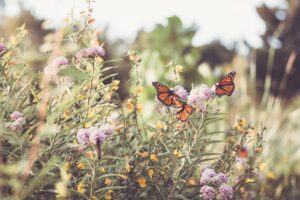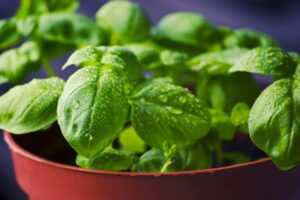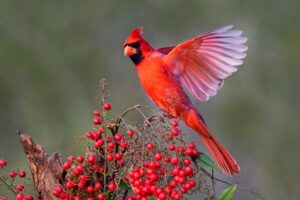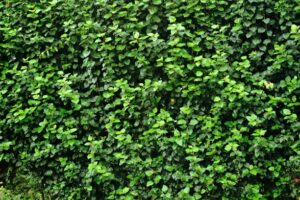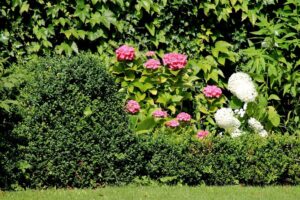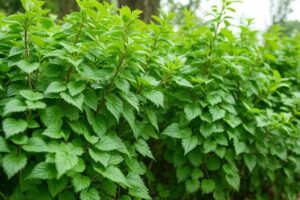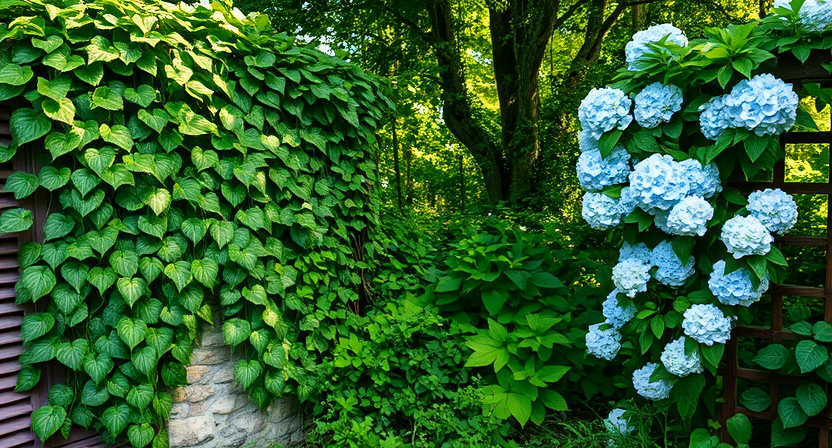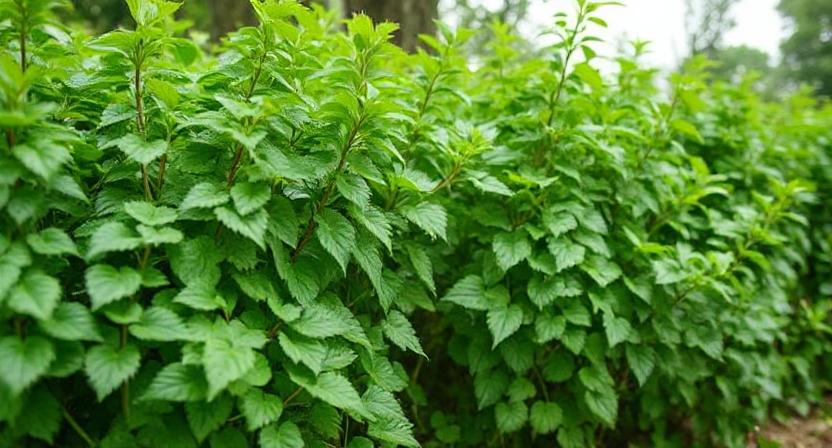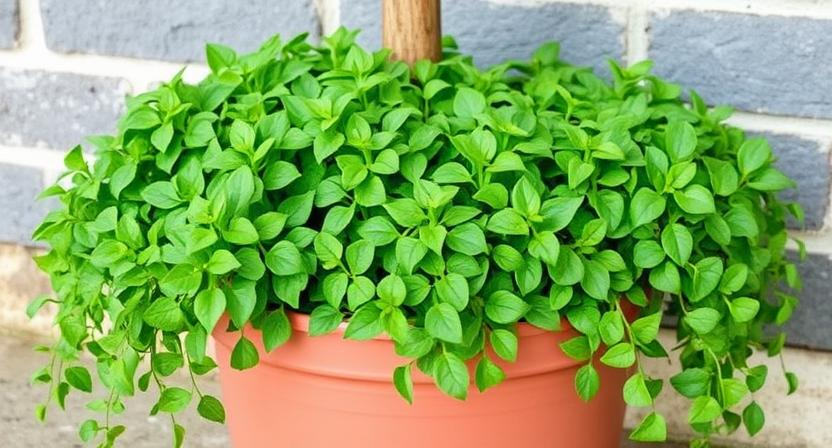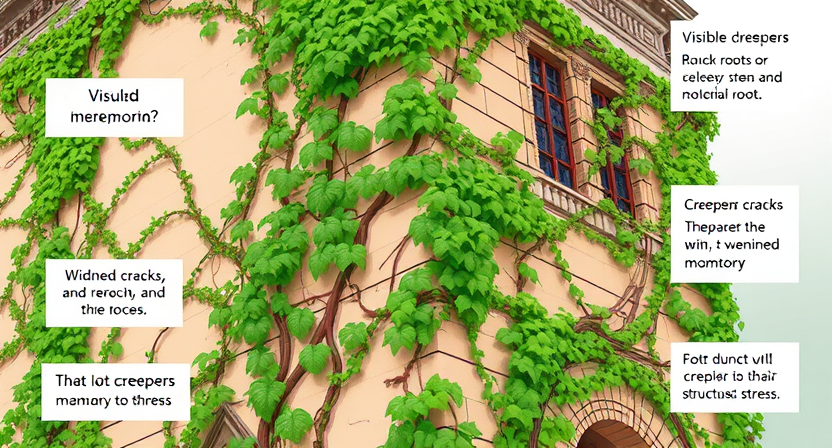Understanding the Importance of Shade-Tolerant Creepers

Shade-tolerant creepers play a crucial role in enhancing the beauty of shaded areas. These creeping plants are specially adapted to thrive in low-light conditions, making them the perfect choice for gardens with limited sunlight. Their ability to grow and spread horizontally along the ground or climb on walls and structures makes them versatile and highly sought after by garden enthusiasts.
One of the main benefits of shade-loving creepers is their ability to provide coverage and create a lush, green backdrop in areas that would otherwise appear dull and barren. They add depth and texture to shaded gardens, transforming them into inviting and enchanting spaces. Additionally, shade-tolerant creepers can act as natural air purifiers, improving the quality of the surrounding environment. With their ability to absorb carbon dioxide and release oxygen, these plants contribute to maintaining a healthier and more sustainable ecosystem.
Shade-tolerant creepers possess a unique charm that can enhance the overall aesthetics of a garden. They bring a touch of life and vibrancy to shaded areas, creating visually appealing landscapes. Whether they are used to cover unsightly fences or to create a natural partition, these creepers can help achieve a more harmonious and cohesive outdoor space. With their ability to adapt to low-light conditions, shade-tolerant creepers are a must-have for any garden that lacks direct sunlight.
• Shade-tolerant creepers thrive in low-light conditions, making them ideal for shaded gardens with limited sunlight.
• These creeping plants can grow horizontally along the ground or climb on walls and structures, adding versatility to garden design.
• Shade-loving creepers provide coverage and create a lush, green backdrop in areas that would otherwise appear dull and barren.
• They add depth and texture to shaded gardens, transforming them into inviting and enchanting spaces.
• Shade-tolerant creepers act as natural air purifiers by absorbing carbon dioxide and releasing oxygen, contributing to a healthier ecosystem.
• These plants enhance the overall aesthetics of a garden, bringing life and vibrancy to shaded areas.
• They can be used to cover unsightly fences or create natural partitions, creating a more harmonious outdoor space.
Factors to Consider When Choosing Creepers for Shaded Areas

When choosing creepers for shaded areas, there are several factors to consider. First and foremost, it is important to determine the level of shade in the designated area. Some creepers are more tolerant of deep shade, while others require a bit of dappled sunlight to thrive. Understanding the specific shade requirements of different creepers will help ensure their successful growth.
Another crucial factor to consider is the type of soil in the shaded area. Some creepers prefer rich, well-draining soil, while others are more adaptable and can tolerate different soil conditions. It is essential to choose creepers that are compatible with the soil type in order to promote healthy growth and longevity. Additionally, it is advisable to consider the overall landscape design and the intended purpose of the creepers. Are they meant to provide privacy, add color, or act as ground cover? By identifying the desired function of the creepers, it becomes easier to select the appropriate varieties for the shaded area.
• Determine the level of shade in the designated area
• Understand the specific shade requirements of different creepers
• Consider the type of soil in the shaded area
• Choose creepers that are compatible with the soil type
• Take into account the overall landscape design and intended purpose
of the creepers
Exploring Different Types of Creepers Suitable for Shade

Creepers are a versatile and popular choice for adding greenery and beauty to shaded areas. When it comes to selecting creepers for shade, there are various options available that can thrive and flourish in these conditions. One such type is the English Ivy (Hedera Helix), known for its ability to tolerate low light levels and shade. With its elegant leaves and ability to climb walls and structures, English Ivy is a perfect choice for creating a lush and green backdrop in shaded gardens.
Another shade-loving creeper is the Japanese Pachysandra (Pachysandra terminalis), which is widely used as ground cover in shaded areas. Its dense, evergreen foliage not only adds a touch of vibrancy but also helps suppress weeds. This low-maintenance creeper is known for its tolerance to shade and ability to carpet the ground with its glossy, oval-shaped leaves. If you are looking to add interest and texture to your shaded garden, the Japanese Pachysandra is a reliable choice.
There are several other types of creepers that are well-suited for shaded areas, each with its unique characteristics and benefits. When exploring different options, consider factors such as the growth habit, maintenance requirements, and overall aesthetic appeal. By selecting the right creepers for your shaded garden, you can create a visually stunning and thriving space that will not only enhance the beauty of your surroundings but also provide a cool and tranquil retreat.
• English Ivy (Hedera Helix): Known for its ability to tolerate low light levels and shade, with elegant leaves and climbing abilities.
• Japanese Pachysandra (Pachysandra terminalis): Widely used as ground cover in shaded areas, dense evergreen foliage suppresses weeds.
• Consider factors such as growth habit, maintenance requirements, and aesthetic appeal when selecting creepers for shaded gardens.
• Create a visually stunning and thriving space that enhances the beauty of surroundings and provides a cool retreat.
Top Features to Look for in Shade-Loving Creepers

When selecting shade-loving creepers for your garden, there are several key features you should look for. Firstly, consider the growth habit of the creeper. Opt for ones that have a trailing or climbing habit, as they will be better suited to adapting to the limited sunlight conditions in shaded areas. Additionally, choose creepers that have strong and flexible stems, as these will be able to adjust and reach for light as they grow.
Another important feature to consider is the foliage of the creeper. Look for varieties that have thick and lush leaves, as these will be better equipped to tolerate the lower light levels in shaded areas. Additionally, opt for creepers with dark green foliage, as they can absorb more sunlight compared to lighter green or variegated leaves. This will ensure that the creeper is able to photosynthesize effectively and stay healthy in shaded conditions.
• Trailing or climbing growth habit
• Strong and flexible stems
• Thick and lush leaves
• Dark green foliage
Benefits of Using Creepers in Shaded Areas

Shaded areas in gardens often pose a challenge for plant growth, as sunlight is limited and few plants thrive in such conditions. However, one solution to this problem is using creepers. These versatile and adaptive plants can easily climb and spread in shaded areas, adding a touch of greenery and beauty to otherwise dull spaces.
Not only do creepers provide aesthetic appeal, but they also offer numerous benefits to shaded areas. Firstly, they can act as natural air purifiers by absorbing pollutants and releasing oxygen. This not only improves the overall air quality but also creates a healthier environment for humans and other surrounding plants. Additionally, creepers help reduce soil erosion by spreading their roots and creating a network that holds the soil together. Their ability to cover and climb various surfaces also makes them great natural insulators, providing shade and reducing heat transfer, which can be particularly beneficial in hot climates.
• Creepers can easily climb and spread in shaded areas, adding greenery and beauty to dull spaces
• They act as natural air purifiers by absorbing pollutants and releasing oxygen
• Creepers help reduce soil erosion by spreading their roots and creating a network that holds the soil together
• Their ability to cover various surfaces makes them great natural insulators, providing shade and reducing heat transfer
A Closer Look at Native Creepers for Shaded Gardens

Native creepers are an excellent choice for shaded gardens as they are well-adapted to the local climate and conditions. These plants have evolved over time to thrive in the specific environment, making them hardier and more resilient. Additionally, native creepers provide numerous benefits to the ecosystem. They attract native pollinators, birds, and insects, creating a thriving habitat that supports biodiversity in your garden. By choosing native creepers, you are not only enhancing the visual appeal of your shaded garden but also promoting a sustainable and balanced ecosystem.
When selecting native creepers for shaded gardens, it is crucial to consider their growth habits and preferences. Some native creepers, like Virginia creeper or Boston ivy, are known for their vigorous growth and ability to cling to walls and fences. These plants can quickly cover large areas, providing an instant lush green wall of foliage. On the other hand, woodland plant species, such as the Allegheny spurge or bigleaf periwinkle, are better suited for understory planting in shaded areas. These plants have adapted to grow in the shade and can tolerate low light conditions, making them ideal choices for creating a natural and serene atmosphere in your shaded garden space.
• Native creepers are well-adapted to local climate and conditions
• They are hardier and more resilient than non-native plants
• Native creepers attract native pollinators, birds, and insects
• Choosing native creepers promotes biodiversity in the garden ecosystem
• Native creepers enhance the visual appeal of shaded gardens
• Virginia creeper and Boston ivy are known for their vigorous growth
and ability to cling to walls and fences
• Woodland plant species like Allegheny spurge or bigleaf periwinkle are
better suited for understory planting in shaded areas.
How to Properly Care for Shade-Tolerant Creepers

Shade-tolerant creepers can bring beauty and life to any shaded area, but they require proper care and attention to thrive. One important aspect of caring for these plants is ensuring they receive the right amount of water. While it may be tempting to over-water them in an effort to compensate for the lack of sunlight, it’s crucial to strike a balance. Over-watering can lead to root rot and other diseases, so it’s best to monitor the moisture levels in the soil and water accordingly. Additionally, providing adequate drainage is essential to prevent waterlogging.
In addition to proper watering, shade-loving creepers also benefit from regular pruning and maintenance. Pruning helps to shape the plants, encourage new growth, and remove any dead or damaged parts. It’s important to prune with care, using sharp and clean tools to avoid any harm to the plant. Regularly inspecting the plant for pests and diseases is another crucial step in caring for these creepers. Identifying any potential issues early on allows for prompt treatment, ensuring the health and longevity of the plants. With the right care and attention, shade-tolerant creepers can flourish and transform any shaded area into a stunning and vibrant garden.
• Monitor the moisture levels in the soil to avoid over-watering and root rot
• Provide adequate drainage to prevent waterlogging
• Regularly prune and shape the plants for new growth and remove dead or damaged parts
• Use sharp and clean tools when pruning to avoid harm to the plant
• Inspect regularly for pests and diseases to identify potential issues early on
• Promptly treat any pests or diseases for the health of the plants
Tips for Designing a Stunning Shaded Garden with Creepers

When designing a stunning shaded garden with creepers, there are several key factors to consider. First and foremost, it’s important to choose the right creepers for the specific light conditions in your shaded area. Look for shade-loving creepers that have a high tolerance for low light levels and can thrive in the absence of direct sunlight.
Next, consider the overall aesthetic you want to achieve in your shaded garden. Creepers come in a variety of colors, textures, and growth habits, so think about the desired visual effect. Do you prefer a lush and dense canopy of green foliage or are you drawn to the delicate blooms of flowering creepers? Think about how the creepers will complement and enhance the existing elements in your garden, such as trees, shrubs, and other plants. By carefully selecting the right creepers and considering the overall design, you can create a stunning shaded garden that is both visually appealing and functional.
Remember, care and maintenance are essential for the success of your shaded garden with creepers. Ensure proper watering, pruning, and fertilizing to keep the creepers healthy and encourage optimal growth. Regularly check for any pests or diseases and take appropriate measures to prevent or treat them. With a little bit of planning and attention to detail, your shaded garden with creepers can be a breathtaking oasis of beauty and tranquility.
• Choose shade-loving creepers that can thrive in low light levels
• Consider the desired visual effect, whether it be lush green foliage or delicate blooms
• Select creepers that complement and enhance existing elements in your garden
• Proper care and maintenance are essential for the success of your shaded garden with creepers
• Ensure proper watering, pruning, and fertilizing to keep the creepers healthy
• Regularly check for pests or diseases and take appropriate measures to prevent or treat them
Real-Life Examples of Beautiful Shaded Gardens with Creepers

A shaded garden can be transformed into a stunning oasis with the addition of carefully chosen creepers. These versatile plants provide vertical interest and can soften the harsh edges of walls and structures, creating a more serene and inviting space. One example of a beautiful shaded garden with creepers is a Japanese-inspired zen garden. By using climbers like the Virginia creeper or the Boston ivy, the garden becomes an enchanting retreat. The dense foliage of these creepers provides a lush green backdrop, while their vibrant autumn colors add a striking contrast to the tranquil surroundings.
Another real-life example of a shaded garden with creepers is a romantic English cottage garden. In this type of garden, creepers like the climbing rose or the clematis are often used to enhance the charm and whimsy of the space. The delicate tendrils of these plants weave through trellises and arbors, creating a romantic atmosphere and a sense of enchantment. The fragrant blooms add bursts of color and fragrance to the shaded corners, making it a perfect place for relaxation and contemplation. These examples showcase how the proper selection and placement of creepers can turn a shaded garden into a breathtaking retreat.
• In a Mediterranean-inspired shaded garden, creepers like the bougainvillea or the jasmine vine can be used to add a touch of exotic beauty. The vibrant colors and delicate flowers of these plants create a stunning contrast against the cool shade, bringing warmth and energy to the space.
• A modern minimalist shaded garden can also benefit from the addition of creepers. Plants like the creeping fig or the English ivy can be trained along walls or fences, creating a living green tapestry that adds texture and interest to an otherwise simple design.
• For those who prefer a more tropical feel, a shaded garden with creepers like the passionflower vine or the trumpet creeper can transport you to paradise. These bold and dramatic plants provide lush foliage and show-stopping blooms that instantly evoke images of lush rainforests and exotic destinations.
• In urban settings where space is limited, vertical gardening with creepers becomes even more important. Creepers such as sweet peas or morning glories can be grown in containers on balconies or terraces, transforming small outdoor spaces into charming green havens.
These real-life examples highlight just some of the possibilities when it comes to creating beautiful shaded gardens with creepers. Whether you’re seeking tranquility, romance, vibrancy, simplicity, or even a taste of paradise, there’s always a creeper out there that can help you achieve your desired aesthetic for your own personal oasis.
Expert Recommendations for the Best Creepers for Shaded Areas

Choosing the best creepers for shaded areas can be a daunting task, but with expert recommendations, you can make an informed decision. One top recommendation is the English Ivy (Hedera helix), known for its ability to thrive in shady conditions. This evergreen vine not only adds a touch of elegance to your garden but also helps to purify the air. Its sprawling foliage and attractive variegated leaves make it a popular choice among garden enthusiasts.
Another excellent option for shaded areas is the Climbing Hydrangea (Hydrangea anomala subsp. petiolaris). This slow-growing deciduous vine features beautiful lacecap flowers and heart-shaped leaves that turn vibrant shades of yellow, orange, and red in the fall. It effortlessly climbs up walls, fences, or any other support structure and creates a stunning visual display. With its adaptability to shade and its ability to attract pollinators, the Climbing Hydrangea is a must-have for any shaded garden.
• English Ivy (Hedera helix) is a top recommendation for shaded areas
• It thrives in shady conditions and adds elegance to your garden
• The sprawling foliage and variegated leaves make it popular among garden enthusiasts
• Climbing Hydrangea (Hydrangea anomala subsp. petiolaris) is another excellent option
• This slow-growing deciduous vine features beautiful lacecap flowers and heart-shaped leaves
• Its leaves turn vibrant shades of yellow, orange, and red in the fall
• It effortlessly climbs up walls, fences, or any other support structure
• The Climbing Hydrangea attracts pollinators and creates a stunning visual display


